Types of fecal pumps: how to choose the right equipment for your needs
Sooner or later, residents of private houses will have to buy units for pumping wastewater and other liquids with a high level of pollution, and such equipment will be very useful at the dacha.
In this article we will look at different types of fecal pumps, which have their own characteristics, advantages and disadvantages. You should be aware of them and take them into account when choosing the appropriate model. By following our advice, you can choose a quality device for your needs.
The content of the article:
Types of fecal pumps
A fecal pump is equipment with increased capacity, designed for pumping viscous liquids with suspended large particles. This type of equipment comes in several types, depending on the design, operating principle and installation method. The scope of application of all types of units also differs.
Scope of application of sewage pumping units
The scope of application of fecal pumps is quite wide. In agriculture, they are widely used for pumping out manure on livestock farms. Such equipment is also needed to regulate the water level in storm sewers, pumping out flooded premises, basements, large containers and reservoirs.
In private construction, pumps are necessary to install a sewer system. For normal movement of fecal wastewater through the pipeline, it is necessary to maintain a slope of at least 3%. This is not always possible.
You can make an additional storage tank and connect it to the main septic tank using pumping equipment for these purposes. This significantly expands the possibilities when planning bathrooms in the house.
And if the sewage system on your site involves a regular cesspool, you will often be faced with the need to clean it. Calling a sewer truck, and regularly, will cost a pretty penny, and by purchasing a simple sewer pump for a cesspool, you can pump out fecal matter yourself.

But there is no need to associate the fecal pump only with waste. With the help of such equipment, you can pump water directly from a natural reservoir, river or lake, for example. Algae and debris cannot damage it.
Happy owners of an artificial pond near their home understand that in order to keep the pond clean, it needs to be periodically cleaned, and therefore drained. No one can guarantee the ideal purity of the water in the pond by the end of the season, so a conventional pump is not always appropriate in this situation.
In order not to damage the equipment, a more reliable and durable fecal pump is used.
Features of using pumping equipment
To cope with the extreme conditions that sewage pumps have to cope with, they must be made of durable materials that can withstand harsh environments.
The housing of different types of fecal pumps can be made of the following durable materials:
- stainless steel;
- bronze;
- cast iron;
- steel;
- thermoplastic.
Another important detail is temperature. The fact is that not all types of fecal sewer pumps are able to cope with hot liquids (above 40 degrees).
This is due to the fact that in some models the pumped liquid is also cooling for the engine. Of course, if the water is too hot, it stops performing this function and the unit will soon overheat.
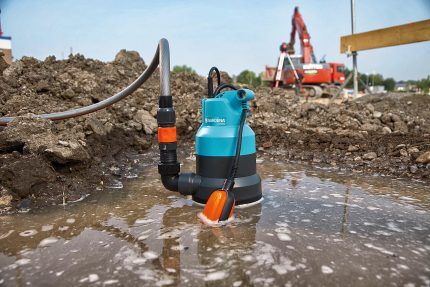
In addition, the contents of the cesspool cannot be called homogeneous. Organic fibrous inclusions, hygiene items, paper, etc. are often found there.
In order to easily pump such liquids, fecal pumps are equipped with an additional device - a grinder.
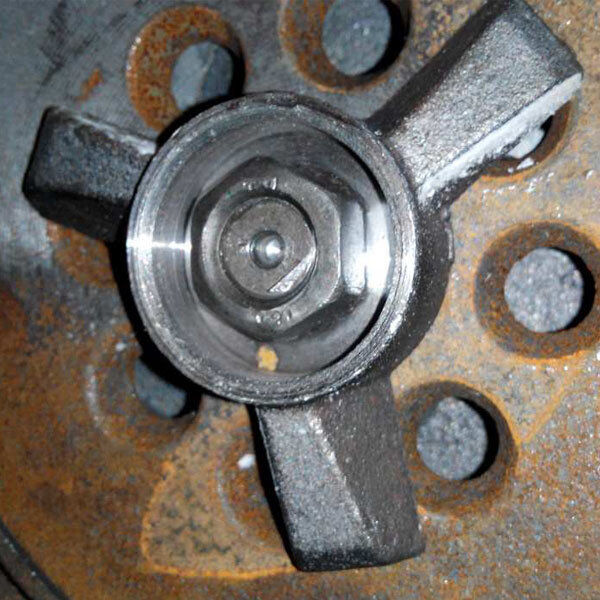
A sewer pump without a grinder is called a drainage pump.It is similar to fecal in principle, but cannot work with liquid in which large particles are suspended. We advise you to familiarize yourself with the criteria choosing a drainage pump.
If the particles are smaller in size than 30 mm, theoretically a sewer unit without a grinder can cope with this task. Typically, in domestic conditions, these are installed to pump water from bathtubs and swimming pools.
In order not to worry every time that something will get into the pump and break it, it is better and more practical to immediately take model with chopper - for guarantee.
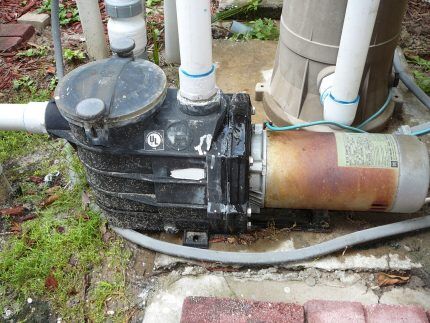
As a rule, household sewage pumps that are purchased for pumping out cesspools do not require increased temperature resistance of the equipment. If the device will pump water from a bathtub, sink, or participate in some technological processes associated with high temperatures, this feature of the equipment will need to be taken into account.
Varieties by design and marking
Depending on the design of the mechanism, the following types of household and industrial fecal pumps are distinguished:
- wastewater;
- waste-mass free-vortex;
- drainage-dynamic;
- fecal-mud;
- fecal monoblock.
Sewage pumps are marked SM. This is a type of horizontal equipment with a cantilever-mounted shaft. As a rule, one closed wheel is used. Dirty water flows through the cast iron body and moves in the desired direction under the influence of centrifugal force.

The free-vortex type of fecal pumps (SMS) is distinguished by an open wheel type. The housing material and the type of shaft fastening are the same as for the SM. If necessary, the equipment can be removed without disassembling the pipeline or removing the electric motor.
Sewage-dynamic fecal pumps can be of two types: horizontal and vertical (SD and SDV, respectively). The body is usually made of gray cast iron. This type of equipment is equipped with one closed centrifugal wheel.
It is the units marked SD that are most often used by utilities for sewage pumping.
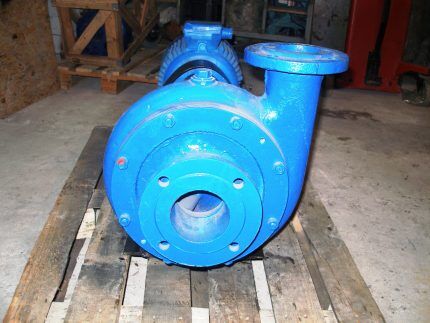
Fecal-mud pumps (FGP and FGS - submersible and stationary, respectively) are equipped with an open centrifugal wheel. They can withstand temperatures up to 55 degrees and have wide openings for the free passage of foreign matter.
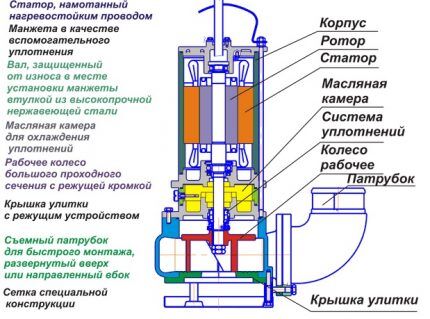
In the agricultural industry, monoblock fecal pumps with an asynchronous motor (CMF) are used on livestock farms and poultry farms. This type of equipment features a built-in electric motor. The motor is completely sealed and has no contact with manure.
Main varieties according to installation method
To choose the type of equipment that suits you, it is not necessary to delve into the intricacies of the operation of the electric motor and calculate the required force of the impeller on the contents of the septic tank or cesspool.At the household level, it is enough to select the desired type depending on the installation method.
There are submersible, semi-submersible and surface sewage pumps. The sewerage system for toilets stands apart among these types.
Type #1 - submersible pump for a cesspool
The submersible type of fecal pumps is great for pumping out a cesspool in a country house or country house. The unit is mounted at the bottom of the tank; it is completely submerged in water, which is why it has this name. This is an easy-to-use, fairly efficient and inexpensive type of equipment for pumping out feces.
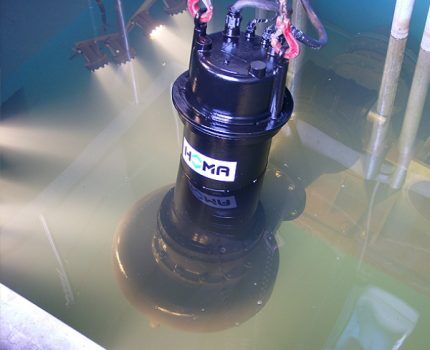
Since this type involves cooling the engine directly with the pumped-out mass, it is not suitable for liquids with temperatures above 40 degrees.
In this case, the pump cannot operate dry for a long time. To prevent such a situation, the unit is equipped with a special circuit breaker. It works on the float principle. When the liquid level approaches critical, an emergency power shutdown is triggered.

The main disadvantage of the submersible type of fecal pumps is the complexity of installation. Since the bottom of the septic tank at the time of installation of the unit is covered with dirty waste, it will not be possible to install the equipment without getting your hands dirty.
The installation process is as follows:
- A pipe is installed at the bottom of the pit, onto which the unit will subsequently be attached.
- Special guides are attached to the pipe; the unit will move along them to the installation site.
- The equipment is connected to a strong cable or steel chain.
- The cable tension is released and the equipment is immersed in the liquid along the guides.
- When the unit has reached the bottom, it is put on a pre-mounted pipe. Fixation is carried out under the influence of gravity.
After proper installation, if necessary, removing the pump from the pit for repairs or for other reasons can be easily done using a fixed cable. It is the submersible type that is equipped with shredders, since it is technically difficult to install it on other models.
Recommendations for choosing the best fecal pump for a cesspool we reviewed here.
Type #2 - semi-submersible device for pumping wastewater
A less common type of fecal pumps for pumping wastewater in private households is semi-submersible. This type involves immersing the suction pipe in liquid, while the engine of the unit is located on a special platform above the water.

The motor part of the unit is always above the surface of the water thanks to the static platform base. This greatly facilitates equipment maintenance, repair and maintenance.
The automatic system for switching on the device starts injection when the liquid reaches a certain level. Likewise, when the height of the wastewater decreases, the system turns off.
This type of equipment is not equipped with grinders, so very contaminated water with large inclusions larger than 15 mm is contraindicated for such a device.
Semi-submersible pumps are not necessarily made of cast iron or stainless steel, since they do not encounter aggressive media as closely as submersible ones. Housing made from cheaper materials allows manufacturers to save significant money. Of course, this is reflected in the price of the finished product.
View #3 - surface or external view of pumps
The surface view of fecal pumps is a unit that is located near the pumped out tank or pit, and only the suction hose comes into contact with sewage.
This design has a number of significant advantages, which have become the reason for the high popularity of this type of equipment:
- mobility;
- compactness;
- low cost;
- ease of installation and operation;
- unobstructed access to the mechanism for maintenance.
Surface pumps are made from simpler materials, since their contact with dirty liquids is short-term. Moving, connecting, installing and repairing equipment of this type is simple and does not require any special techniques.
The disadvantages of outdoor units include:
- low power;
- relatively low throughput;
- air temperature limitation;
- leaky housing.
There is a distance from the pump discharge mechanism to the pumped liquid, sometimes quite large. The relatively low power of the equipment is due to the design features and operating principle of this type of units. It is advisable to avoid liquids with inclusions larger than 5 mm.
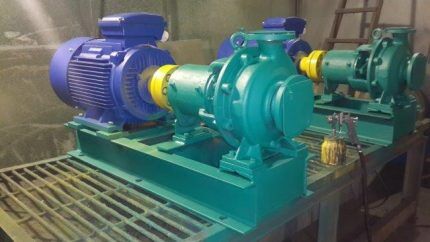
Since at sub-zero temperatures water can freeze directly in the pipeline or body of the surface pump, using it in cold weather is not allowed. If such a need arises, the equipment is placed indoors or a special caisson is arranged.
Type #4 - forced sewage system for plumbing
The forced sewer system operates on the same principle as other fecal pumps, but it is not installed in the septic tank, but directly behind the toilet.
This equipment is a centrifugal pump with grinder. It is used when a gravity sewer pipeline scheme is impossible or difficult to implement.

The shredder turns the waste into a homogeneous mass, and the pump directs it in the right direction. To create the required pressure, sewer pipes with a diameter of up to 40 mm are used. A non-return valve and a carbon filter protect the room from possible unpleasant odors.
There are different types of sewerage units for different plumbing fixtures. Power is supplied from a regular 220V outlet.
How to choose a unit for your needs?
When you have become familiar with the existing types of fecal pumps, you are faced with the question of what to look for when choosing? If you take into account several basic parameters, pay attention to the manufacturer and the cost of the equipment, you can choose a suitable unit for any need - for pumping water from a swimming pool, basement, etc. Fortunately, there is a large selection on the market.
If you need a pump to pump water out of a pond or other body of water, go to via this link and see the rating of the best models and advice on choosing.
The main characteristic that determines the quality of operation of a fecal pump is productivity. It displays how much wastewater the equipment can pump per unit of time. To select the required value for servicing a private home, you should calculate how quickly waste accumulates in the pit and how much of it will need to be pumped out at a time.
As a rule, this indicator is measured in m3/hour and ranges from 5 to 48 cubic meters per hour for industrial models. The lowest-performance models are suitable for domestic use. On average, 10-12 cubic meters per hour will be the best option for the home.
If you need a pump for your garden, we recommend that you familiarize yourself with the most suitable types and manufacturers equipment for pumping out fecal matter.
Another parameter that is of great importance when choosing is the size of the permissible particles. Again, you initially need to analyze the material with which the equipment will have to work. If you can't find the model you need, look at options with a shredder. They are most often suitable for a cesspool.
If the equipment is submersible, consider the permissible immersion depth.Compare it with the depth of your septic tank and make a choice based on these values. Pay attention to the power of the electric motor. Models from 0.25 kW (for drainage pumps) and up to 4 kW (for industrial units) are presented.
It is also worth measuring in meters the distance from the installation site to the point of transportation of fecal matter. The indicator is taken into account both horizontally and vertically, because with a slope the pump will have to do more work than under normal conditions.
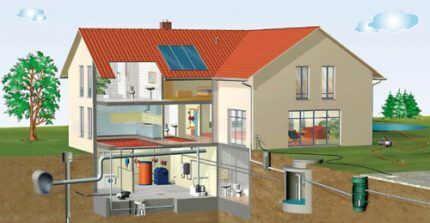
Additional functionality in the form of remote control or an automatic on/off system for the electric motor is selected at the request of the customer. Of course, all these “tricks” increase the cost of the device.
Conclusions and useful video on the topic
Information about the operation of different fecal pumps, presented in the video clips, will help you make your choice.
You can see how the grinder of a submersible pumping unit works in this video:
And this video is about how to pump out a drain hole using a submersible device:
As you can see, choosing such equipment as a sewage pump necessary for a country house is not such a simple task. The variety of species and subspecies can confuse anyone. After familiarizing yourself with each of them and finding out its features, you can choose the appropriate model for home use.
In the process of choosing the appropriate fecal pump model, do you have any additional questions? Ask them below under our article - our experts and owners of similar equipment will try to clarify the situation.
Or maybe you use a fecal pump in your country house and want to share your experience with beginners? Write your opinion about the device, tell us about the pros and cons of your model.




We need a fecal pump at a reasonable price. Giving the price like for some Grundfos to download shit is too much for me. Moreover, I used to buy a pump from them, but either because of the fall in the ruble exchange rate, or the company got promoted and started charging a premium for the brand, but now I can’t afford such a pump.
It is desirable that the pump have a metal wheel with blades; they significantly better organize the flow of fecal sludge, which often has fibrous inclusions. At least that's what the plumber explained to me.
Are there normal Chinese or domestic pumps that can work for at least 5 years without complaints?
Hello! Currently, the market offers many fecal pumps from 7-10 to 50-70 thousand rubles. Of course, Chinese appliances are traditionally the cheapest. It is very difficult to choose among all the variety of manufacturers. My neighbor has had a Yantai for 2 years now and it works without interruption. Bought on the official website of the manufacturer in Russia.
Don’t take this as an advertisement, but I personally think Unipump is the best inexpensive pump. I have 2 pumps from this company: a fecal V1300DF and a pressure-increasing mini-pump. Both have worked great for over 3 years now. The Unipump brand is Danish, but the pumps are produced in China.The cost of a fecal pump is approximately 13-15 thousand rubles. By the way, the vaunted Grundfos is also produced in China, and yes, when buying equipment from this brand, you are largely overpaying for the well-known name on the sticker.
Do pumps with a grinder necessarily require fixing (mounting) in the septic tank? Are there any free-floating models with a chopper?